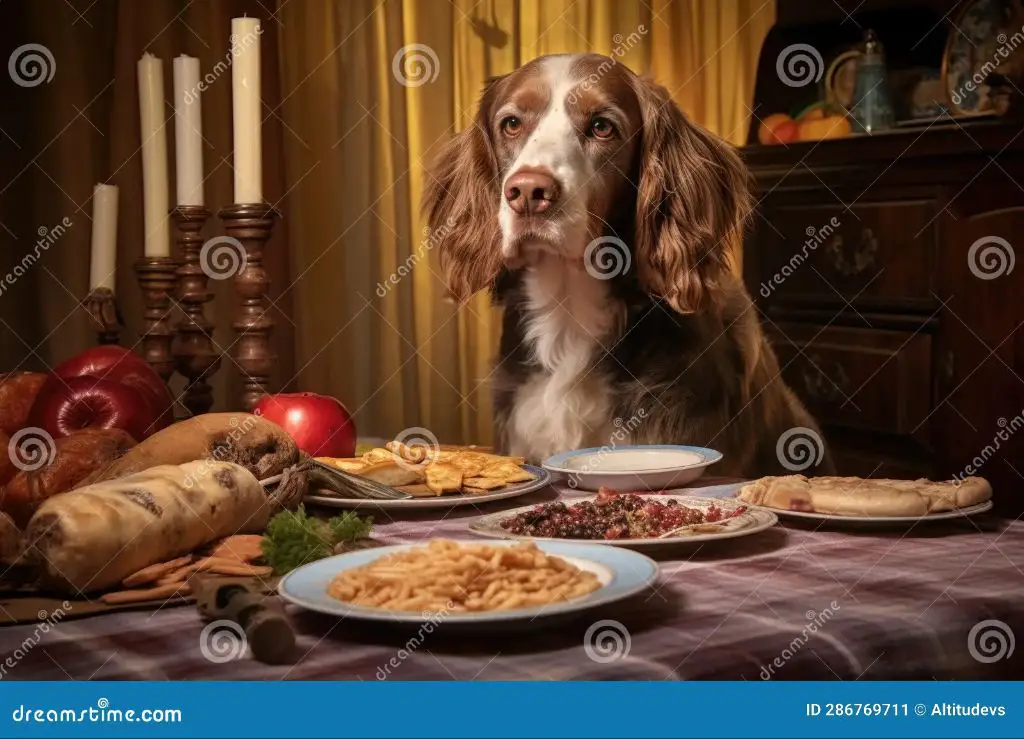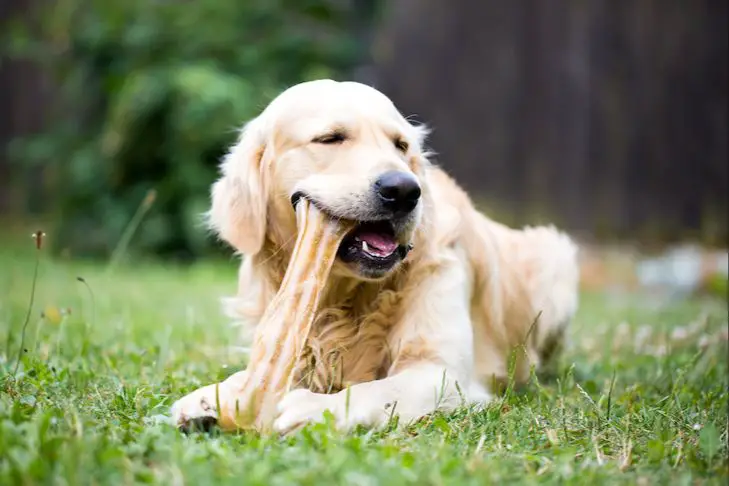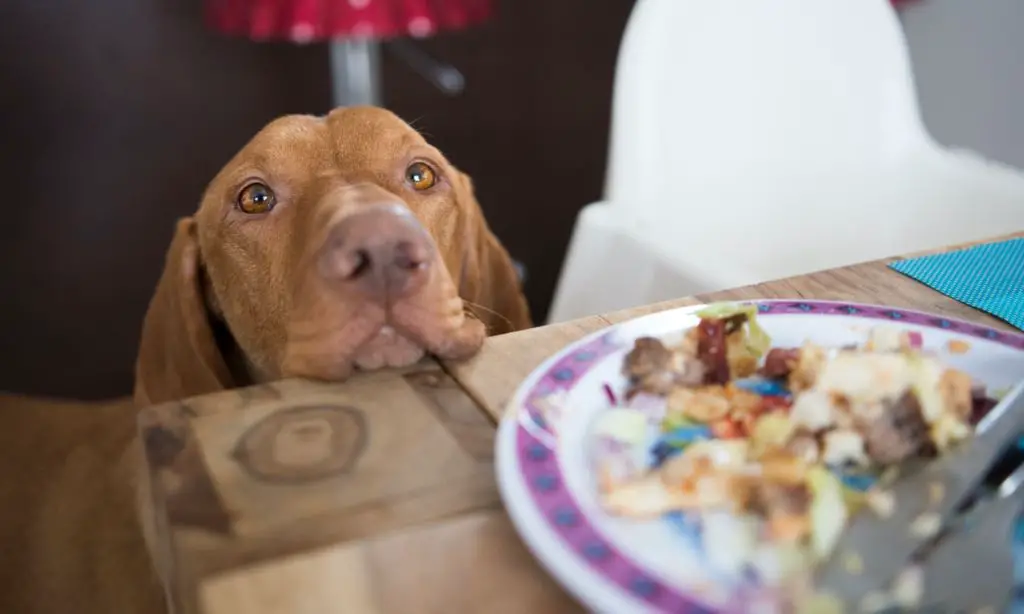Introduction
Many dog owners find themselves in a familiar situation at dinnertime – their dog staring longingly at the food on their plate rather than eating from their own bowl. This can lead to frustration on the owner’s part as they try to understand why their dog seems to prefer human food over their specially formulated dog food.
There are several potential reasons dogs may favor people food. These can include differences in taste, texture, smell, and variety compared to commercial dog food. The use of table scraps as treats can also reinforce choosy eating behavior. While it may be tempting to share tidbits from our plates, this can lead to health issues for dogs if done excessively. With some training and finding foods your dog enjoys, it is possible to get them eating their own food again.
Taste Preferences
Dogs evolved as carnivores, with taste preferences attuned to meat and fat. Their taste buds are not as sensitive to sweet flavors as humans. Human food often contains more salt, sugar and fat than dog food, making it more palatable to dogs.
Kibble and canned dog food aim for nutritional balance, not irresistible flavors. Manufacturers focus more on ingredients and formulations that meet dogs’ health needs rather than their cravings.

On the other hand, people food offers flavors and aromas that appeal more to a dog’s preferences. Table scraps from meat, cheese, fast food and sweets are rich in the fat, salt and sugar that dogs naturally love.
Additionally, the variety and novelty of human food excites dogs more than the same bland kibble at every meal. Dogs prefer diversity, and forbidden snacks from the table seem tastier and more enticing.
Smell
A dog’s sense of smell is much stronger than a human’s. They have up to 300 million scent receptors in their noses, while humans only have about 6 million. This means dogs experience smells on a completely different level than we do.
When a dog sniffs their food, they are detecting hundreds of different odor compounds. While kibble and canned dog foods are formulated to have appealing meaty aromas, human foods like meats, cheeses, and leftovers simply have much more complex scents.
Dogs are attracted to the potent, rich smells of human foods. The aroma triggers their appetite and makes them more interested in eating it. In comparison, their own food can seem boring or bland. The smells of people food are irresistible from a dog’s perspective.

Additionally, dogs learn to associate the smell of human food with the positive experience of getting table scraps. The aroma becomes imprinted as something delicious they want more of.
Texture
Dog food is often soft and mushy, while human food tends to have more texture and crunch. Dogs love foods that are crispy, crunchy, and have some bite to them. The hard exterior and interior crunchiness of human foods is appealing to dogs.
Dry dog kibble can get soggy after being soaked in water or saliva. Leftover wet dog food can become unappealingly soft and squishy. Table scraps like chicken skin, crackers, chips, vegetables, and fruits maintain their texture very well. The crispness and density is often irresistible to dogs.
Research has shown that dogs prefer foods that require chewing. The act of crunching and chewing provides dogs with mental stimulation that soft mushy foods do not. Foods like carrots, apples, string cheese, and bread crusts satisfy a dog’s innate desire to chew.

Adding some crunch to your dog’s diet by topping their normal food with a few crunchy treats or mixing in some chopped veggies could make it more appetizing. Just be sure to introduce new foods gradually.
Variety
One reason your dog may prefer human food is because of the lack of variety in his usual dog food diet. While we may feed our dogs the same kibble or canned food day after day, this repetitive diet can become monotonous for our canine companions.
Dogs are naturally scavengers and opportunistic eaters. In the wild, they would eat a wide range of foods depending on what was available and in season. The constantly changing flavors and textures provided mental stimulation and dietary variety.
In contrast, commercial dog foods contain the same ingredients meal after meal. Some dogs grow tired of the same old kibble and crave new tastes and textures. When they catch a whiff of the ever-changing human food on our plates, it’s no wonder they get excited.
The key is to add more diversity to your dog’s diet so he doesn’t feel the need to scavenge for food variety. Rotate between a few high-quality commercial dog foods, add some homemade food into the mix, or try food-dispensing toys to make eating time more interesting.
Table Scraps
Many dog owners are guilty of slipping Fido scraps from their dinner plate. While it seems innocent enough, feeding your dog tidbits of human food actually conditions them to expect and hold out for people food. This is because dogs love the strong smells and flavors of what their humans are eating. The rich seasonings and oils we cook with make our food much tastier than plain dog kibble.

Once a dog starts receiving scrumptious snacks like pizza crust or spoonfuls of mashed potatoes on a regular basis, they learn to turn up their nose at their normal dog food. After all, why settle for boring kibble when they know you’ll eventually cave and give them something better? This selective appetite and refusal to eat regular food is a behavior problem that owners have unwittingly brought on themselves.
The key is not to give in when your pup begs for food from your plate. While it may be hard to resist those pleading eyes, you must be strong and consistent. Feed your dog only dog food and treats to reset their expectation that human food will not be forthcoming.
Health Concerns
Feeding human food to dogs on a regular basis can lead to some serious health issues. Here are some of the main concerns:
Pancreatitis – Fatty and spicy human foods can inflame a dog’s pancreas and cause pancreatitis, which requires hospitalization and can be fatal.
Gastrointestinal Upset – Foods like dairy, chocolate, onions, garlic, and excess fat or spices can cause vomiting, diarrhea, and other GI issues in dogs.
Obesity – The extra calories and fat from table scraps lead to obesity over time. Excess weight puts strain on joints and organs.
Dental Disease – Sugary human foods promote plaque buildup and tooth decay.
Nutritional Imbalances – A diet of “people food” lacks the vitamins and minerals dogs need for coat, skin, joint, heart, and immune system health.
Bone Damage – Cooked bones splinter easily and can cause obstructions or lacerations of the digestive tract.
Food Allergies/Intolerances – Ingredients like wheat, dairy, or corn can trigger allergic reactions in some dogs.
While dogs tend to love human food, a steady diet of it can lead to malnutrition, obesity, and other health problems over time. It’s best to stick to quality commercial dog food and only offer people foods in moderation.
Solutions
There are a few good ways to get a picky dog transitioned back to eating their normal dog food. It takes some patience but with persistence your dog should start accepting their food again.
Try gradually mixing in some of the dog food with the human food they are currently enjoying. Start with a small amount, like 10%, then slowly increase the ratio of dog food over several weeks. This allows your dog’s taste buds to adjust to the flavor of dog food again. Make sure to use praise and treats to positively reinforce eating their normal food.
Establish a clear feeding schedule rather than leaving food out all day. Let your dog eat their food for 10-15 minutes, then pick up whatever remains uneaten until the next scheduled mealtime. Healthy dogs won’t starve themselves, and this schedule helps realign their hunger with mealtimes.
Consider adding a little warm water, broth or olive oil to their kibble to enhance flavor and aroma. You can also try different proteins or formulas, as your dog may prefer a specific meat, grain-free, senior or puppy formula.
With patience, persistence and positive reinforcement, you can get your picky eater transitioned back to their high quality complete dog food. Consult your vet if concerns remain.
When to Seek Help
There are times when a dog’s picky eating goes beyond simply preferring human food. If your dog is refusing their regular food for multiple days or seems to have completely lost interest in their dog food, it’s time to consult your veterinarian.
Some signs that indicate an underlying health issue may be causing your dog’s appetite changes include:
- Sudden weight loss or gain
- Lethargy or lack of energy
- Excessive vomiting or diarrhea
- Increased thirst or urination
Dental disease, allergies, and gastrointestinal issues are common medical causes of appetite changes in dogs. Your veterinarian can perform a physical exam, diagnostic tests, and recommend treatment plans as needed.
For dogs with ongoing picky eating without a medical cause, a veterinary nutritionist may be able to provide more specialized advice. They can assess your dog’s diet, health status, and feeding habits in-depth. Veterinary nutritionists may recommend dietary changes, different brands or formulations, adding mix-ins, or using puzzle feeders to encourage picky dogs to eat.
While tempting your dog with human food often reinforces picky eating, there may be an underlying issue if your dog refuses their own food over an extended period. Consulting your veterinarian and, if needed, a veterinary nutritionist can help identify and address any potential health concerns leading to appetite changes.
Conclusion
In summary, there are several key reasons why dogs may prefer human food over their regular dog food:
- Human food often has a more appealing taste and smell due to seasoning and salt.
- The texture of human food can be more enticing with a mix of soft and crunchy items.
- The variety of flavors and ingredients in people food is more exciting than the same dry kibble every day.
- Dogs love getting table scraps as a treat and develop a preference for human food.
To encourage your dog to eat their own food, try mixing in a bit of wet dog food, broth, or healthy scraps to enhance the smell and taste. Switch up dog food brands and flavors to add variety. Establish a routine with set mealtimes rather than free-feeding. Avoid giving table scraps, which can lead to picky eating. Consult your vet if your dog refuses to eat or experiences weight loss.
With some creativity and consistency, you can get your dog eating and enjoying their own food again.